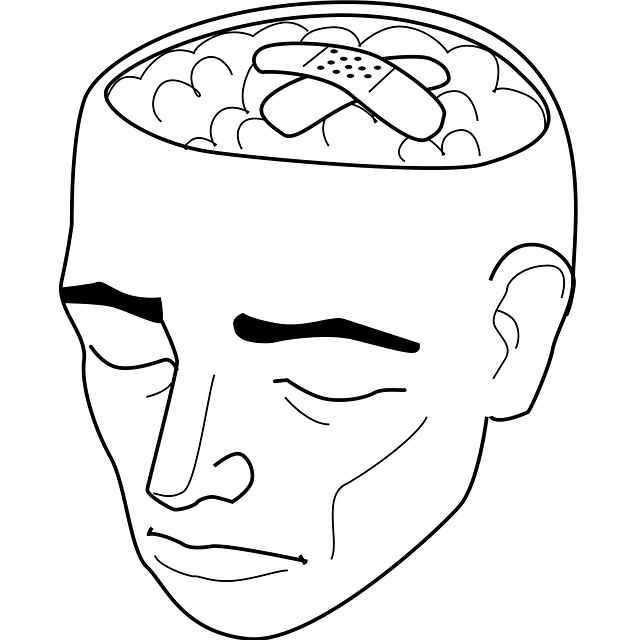Burnout is a significant issue in healthcare, characterized by emotional exhaustion and decreased job satisfaction, impacting both provider well-being and patient care. To prevent and manage burnout, open dialogue about mental health through programs focusing on inner strength, stress reduction, and mindfulness practices is crucial. Effective coping mechanisms like exercise and hobbies reduce stress levels. For overwhelming stress, professional support from services like Englewood Dissociative Disorder Therapy offers specialized strategies. Building resilient workplaces with work-life balance policies, open communication, and professional development opportunities further reduces stress and enhances job satisfaction.
In the demanding landscape of healthcare, burnout among providers is a growing concern. This article delves into effective strategies to prevent healthcare provider burnout, focusing on early recognition and sustainable solutions. We explore the subtle signs and symptoms of exhaustion, offering practical coping mechanisms for stress reduction and mental well-being. Additionally, we examine organizational approaches to build resilient work environments, drawing parallels with strategies employed in Englewood Dissociative Disorder Therapy to foster long-term support for healthcare professionals.
- Recognizing Burnout: Early Signs and Symptoms of Healthcare Provider Exhaustion
- Implementing Effective Coping Mechanisms: Strategies for Stress Reduction and Mental Well-being
- Building Resilient Workplaces: Organizational Approaches to Support Healthcare Providers Long-term
Recognizing Burnout: Early Signs and Symptoms of Healthcare Provider Exhaustion

Burnout is a significant concern within the healthcare industry, impacting both providers’ well-being and patient care quality. Recognizing the early signs and symptoms is crucial to addressing this issue effectively. Healthcare providers often exhibit a range of indicators that signal exhaustion and potential burnout. These may include emotional exhaustion, characterized by feelings of depletion and reduced empathy towards patients. Increased cynicism and detachment from work, as well as decreased professional satisfaction, are also common red flags. Physical symptoms such as chronic fatigue, headaches, and sleep disturbances can further manifest, affecting overall health and performance.
The subtle signs of burnout should not be overlooked, especially in high-pressure environments like hospitals or clinics. Many healthcare professionals may experience a sense of detachment from their work, leading to decreased productivity and increased errors. Encouraging open dialogue about mental health, particularly through programs focused on inner strength development and mental health education, can foster an environment where providers feel supported. Additionally, implementing stress reduction methods proves beneficial in preventing and managing burnout, ensuring healthcare staff maintain resilience and a healthy work-life balance.
Implementing Effective Coping Mechanisms: Strategies for Stress Reduction and Mental Well-being

Healthcare providers, like anyone else, are not immune to stress and burnout. Implementing effective coping mechanisms is a proactive approach to managing workload-related pressures. Strategies such as mindfulness practices, exercise, and engaging in hobbies can significantly reduce stress levels and promote mental well-being. These activities provide much-needed breaks from the demands of patient care, allowing healthcare professionals to recharge their emotional batteries.
In cases where stress becomes overwhelming or persistent, seeking professional support is essential. Services like Englewood Dissociative Disorder Therapy offer specialized coping strategies tailored for the unique challenges faced by healthcare workers. Additionally, social skills training and trauma support services can foster a sense of community and help build resilience against burnout. By integrating these practices into their lives, healthcare providers can maintain a healthy work-life balance, ensuring they are at their best when caring for patients.
Building Resilient Workplaces: Organizational Approaches to Support Healthcare Providers Long-term

Building resilient workplaces is an essential strategy to prevent burnout among healthcare providers. Organizations can foster a supportive environment by implementing policies that promote work-life balance, encouraging open communication channels for expressing concerns and ideas, and providing regular opportunities for professional development. These initiatives help reduce stress levels and enhance job satisfaction.
By incorporating anxiety relief techniques into the workplace culture, such as offering mindfulness sessions or stress management workshops, healthcare providers can develop coping mechanisms to navigate demanding situations. Additionally, conflict resolution techniques training can improve interpersonal relationships within teams, fostering a collaborative atmosphere that benefits overall well-being. Englewood Dissociative Disorder Therapy, for instance, can be adapted to help professionals manage complex emotional states, ensuring they remain equipped to provide quality care while maintaining their mental health.
Healthcare provider burnout is a pressing issue, but with the right strategies, it can be effectively mitigated. By recognizing early signs and symptoms through Englewood Dissociative Disorder Therapy and other coping mechanisms, healthcare professionals can implement stress reduction techniques to improve their mental well-being. Additionally, organizations play a crucial role in building resilient workplaces that support long-term provider health. Integrating these strategies ensures a more sustainable and compassionate healthcare system for all.








